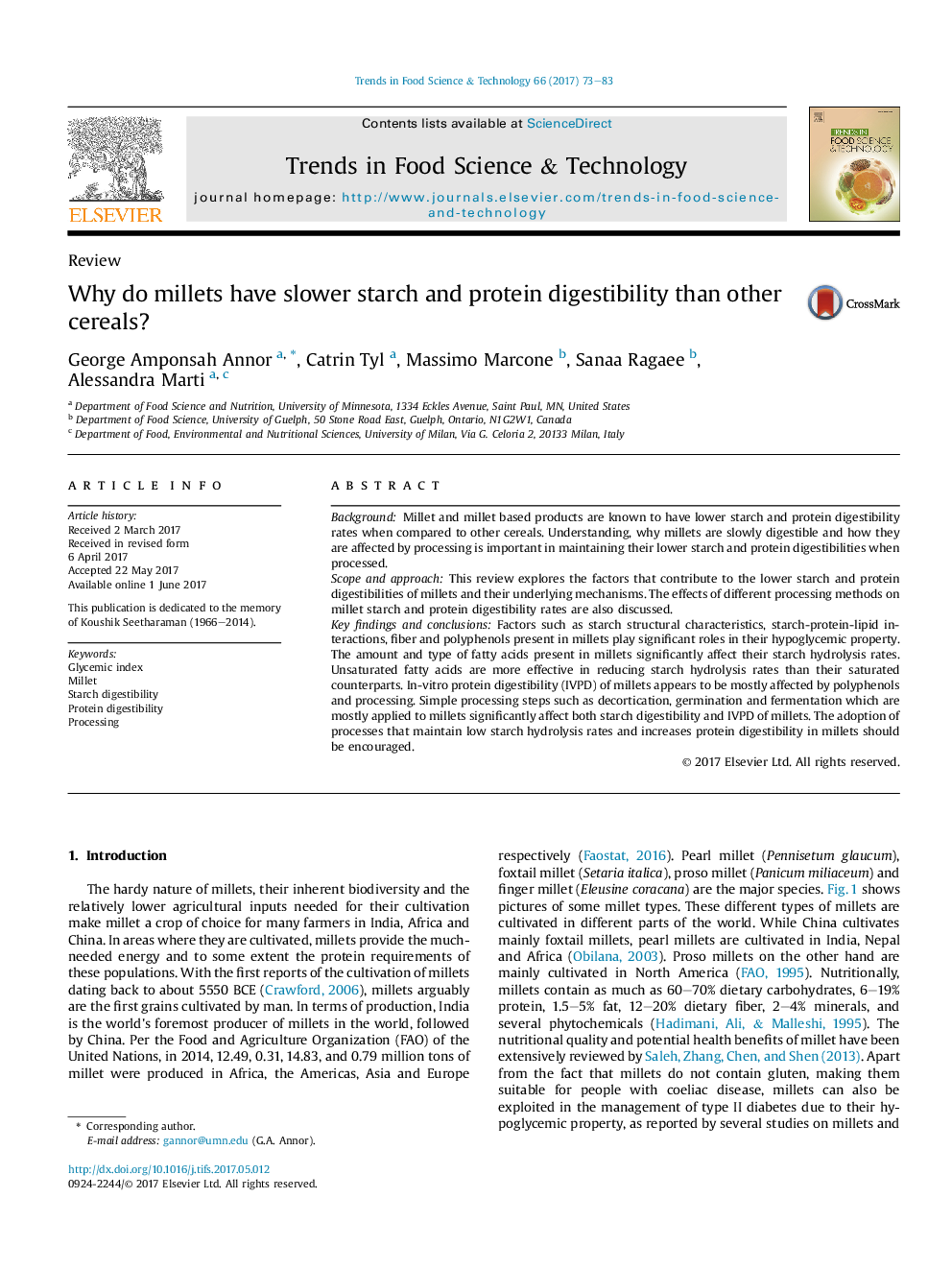| Article ID | Journal | Published Year | Pages | File Type |
|---|---|---|---|---|
| 5523703 | Trends in Food Science & Technology | 2017 | 11 Pages |
â¢Exploring the factors that contribute to the slow starch digestibility of millets.â¢Understanding how these factors reduce millet starch and protein digestibility.â¢Effect of processing on the in-vitro starch and protein digestibility of millets.
BackgroundMillet and millet based products are known to have lower starch and protein digestibility rates when compared to other cereals. Understanding, why millets are slowly digestible and how they are affected by processing is important in maintaining their lower starch and protein digestibilities when processed.Scope and approachThis review explores the factors that contribute to the lower starch and protein digestibilities of millets and their underlying mechanisms. The effects of different processing methods on millet starch and protein digestibility rates are also discussed.Key findings and conclusionsFactors such as starch structural characteristics, starch-protein-lipid interactions, fiber and polyphenols present in millets play significant roles in their hypoglycemic property. The amount and type of fatty acids present in millets significantly affect their starch hydrolysis rates. Unsaturated fatty acids are more effective in reducing starch hydrolysis rates than their saturated counterparts. In-vitro protein digestibility (IVPD) of millets appears to be mostly affected by polyphenols and processing. Simple processing steps such as decortication, germination and fermentation which are mostly applied to millets significantly affect both starch digestibility and IVPD of millets. The adoption of processes that maintain low starch hydrolysis rates and increases protein digestibility in millets should be encouraged.
